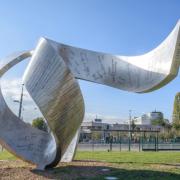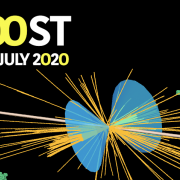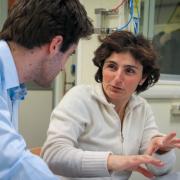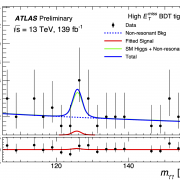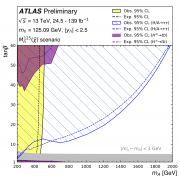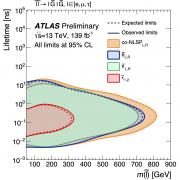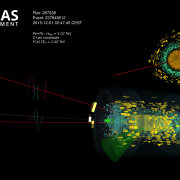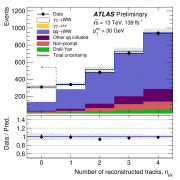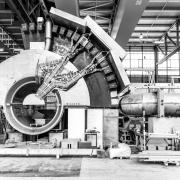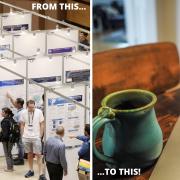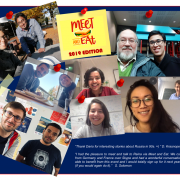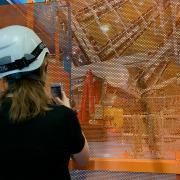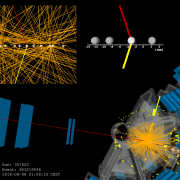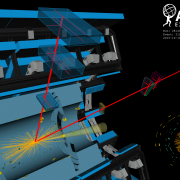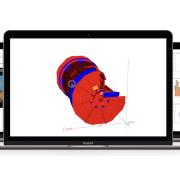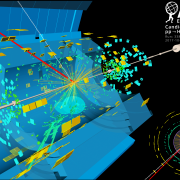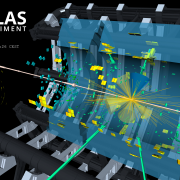Access to Collaboration Site and Physics Results
Updates tagged: “Moriond”
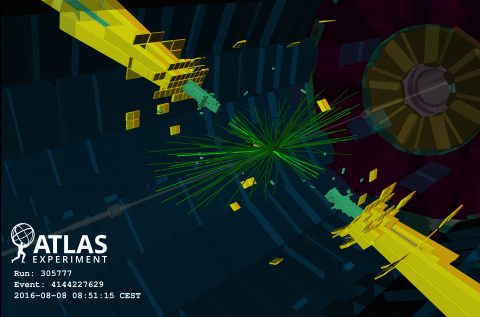
Particle-hunting at the energy frontier
There are many mysteries the Standard Model of particle physics cannot answer. Why is there an imbalance between matter and anti-matter in our Universe? What is the nature of dark matter or dark energy? And many more. The existence of physics beyond the Standard Model can solve some of these fundamental questions. By studying the head-on collisions of protons at a centre-of-mass energy of 13 TeV provided by the LHC, the ATLAS Collaboration is on the hunt for signs of new physics.
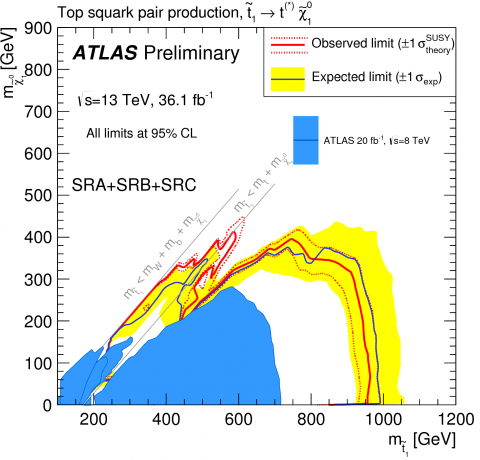
Searching for signs of the “stop”
In new results presented at the Moriond Electroweak conference, the ATLAS Collaboration has sifted through the full available data sample of the LHC’s 13 TeV proton collisions in search of a specific SUSY particle: the heavy partner to the top quark, called the “top squark” or “stop”
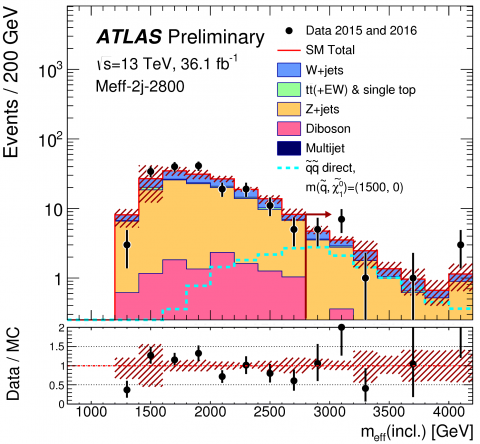
The search for super-particles continues!
Many of the most important unanswered questions in fundamental physics are related to mass. Why do elementary particles, which we have observed and measured at CERN and other laboratories, have the masses they do? And why are they so different, with the mass of the top quark more than three hundred thousand times that of the electron? The presence of dark matter in our universe is inferred because of its mass but, if it is a particle, what is it? While the Standard Model has been a tremendously successful theory in describing the interactions of sub-atomic particles, we must look to even larger masses in search of answers and, potentially, new supersymmetric particles
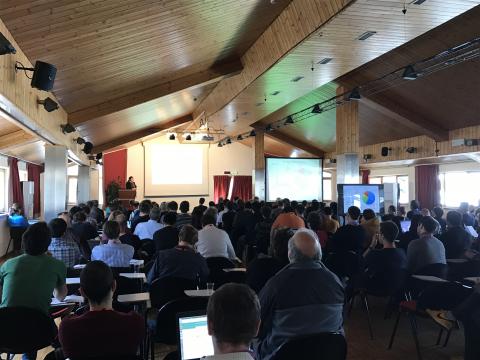
ATLAS to present new results at Moriond
Every March for the past 50 years, particles physicists have been heading to the mountains. The terminus of this migration? Les Rencontres de Moriond, one of the year’s first major conference for high-energy physics.
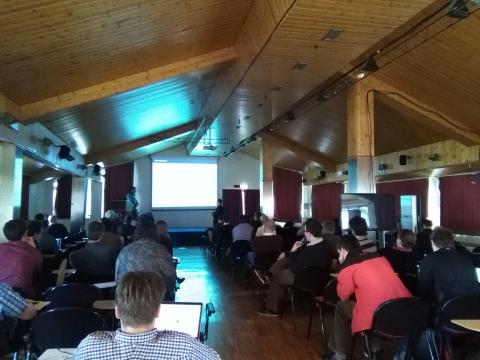
One does not simply give a talk at Moriond
The third day of the Moriond QCD conference was dedicated to quantum chromodynamics (QCD), the theory that describes strong interactions itself.
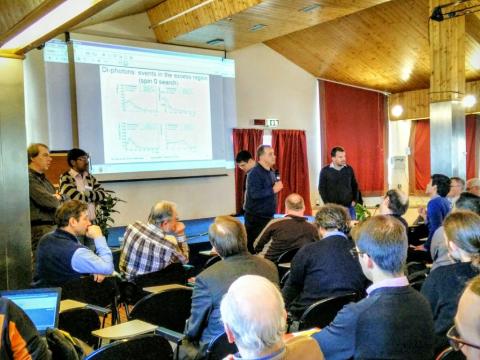
Bumps in the light
Here we are at the second blog from the Moriond QCD conference and, as promised, I will discuss a bit of physics.
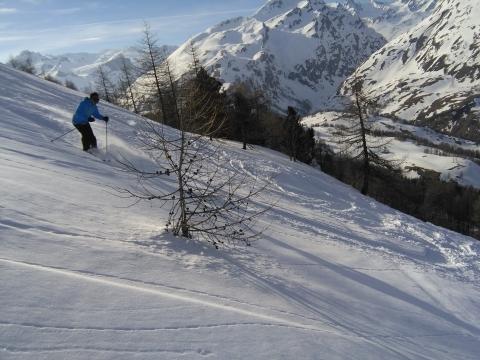
First impressions from the Moriond conference
My name is Mario Campanelli, and I am a physicist who has been working for about 9 years on the ATLAS experiment, as part of the academic staff of University College London. This is the first time I write a blog, but I do have quite an experience in communicating science to the public, having guided visitors around CERN since I started working there as a PhD student 20 years ago, and also having written two books for the general public. Since Saturday I have been in La Thuile, a mountain resort in the Italian Alps, for the Rencontres de Moriond - arguably the most important winter conference in particle physics.

Searching beyond the Standard Model with photon pairs
The ATLAS Collaboration uses two selections in this search, one optimised for Higgs-like particles that are expected to have a strong signal compared to background with both photons in the central region of the detector (the “spin-0” selection) and a second optimised for graviton-like particles (the “spin-2” selection) which often have at least one photon close to the LHC proton beam axis.
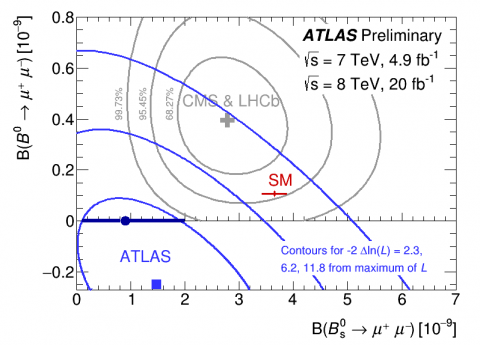
Chasing after elusive B meson decays into muons
Almost four years following the discovery of the Higgs boson, LHC experiments are now more than ever exploring the possibility of new particles and new effects beyond the Standard Model.
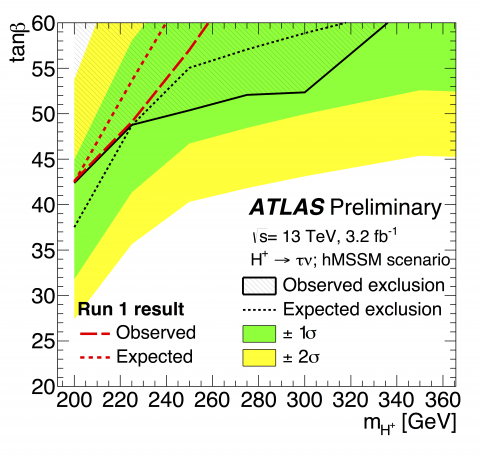
Are there more Higgs bosons?
The results presented by the ATLAS collaboration during the Moriond Electroweak 2016 conference set new limits on a potential extended Higgs sector.


